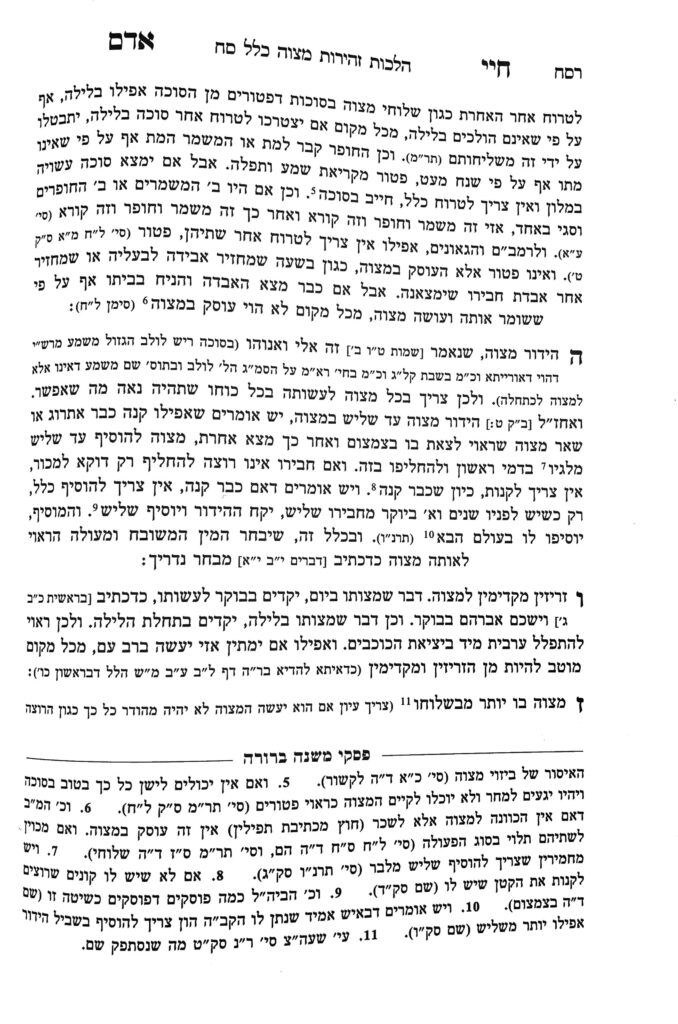We are continuing siman 4, regarding the concept of oseik bmitzvah patur min hamitzvah.
We learned that the Chayei Adam writes that the idea that one is patur from mitzvah B is only when the mitzvah B will require tircha (effort) which will take one away from mitzvah A. The Chayei Adam had given two examples to demonstrate his point, watching a meis or digging a kever. The Chayei Adam will further clarify this point.
The Chayei Adam extends the idea that when mitzvah B does not require tircha, one is still chayav to fulfill it. He writes that if mitzvah A can be fulfilled by one person, but two people are working together, they should take turns in a way that each can fulfill the other mitzvah they need to fulfill. In the Chayei Adam’s example, the two people are taking turns watching a meis or digging a grave, and should take turns in a way that they can both recite kriyas shema). This is akin to a situation of no tircha, because technically one of the people is superfluous.
The Chayei Adam writes that according to the Rambam, once a person is oseik in one mitzvah, they are patur from the other, even if there would be no tircha to perform mitzvah B. Thus, even in the previous case of travel on Sukkos to redeem captives, those traveling would be patur from Sukkah even if they find one without any tircha. Additionally, the people digging a grave or watching a meis would be patur as well.
The Chayei Adam continues, and writes that a person is only patur for another mitzvah when they are actively involved in the first mitzvah. For example, if a person finds a lost object, they are responsible to announce their find and to dust it once a month. It comes out that once a month they are taking care of the mitzvah; otherwise, it sits in a closet. While a person certainly receives sechar for holding onto the object for a long time, they are not actively involved in the mitzvah during the month, so they are not patur from other mitzvos. Chazal specifically use the language oseik to describe the level of involvement of a person in one mitzvah which exempts them from another mitzvah. Similarly, we do not say that a person wearing tefillin or tzitzis does not have to daven or give tzedakah. At the times in which they are oseik in tefillin or tzitzis (e.g., putting them on), they would be patur, but when they are just passively fulfilling the mitzvah, they are chayav in other mitzvos.
Summary
The Chayei Adam holds that oseik b’mitzvah patur min hamitzvah applies when there will be tircha involved in performing the second mitzvah. However, if there is no tircha involved, they are chayav to perform the second mitzvah as well.
Similarly, if two people are involved in a mitzvah in which only one person is necessary, they should take turns to ensure they can each fulfill the second mitzvah.
Oseik b’mitzvah patur min hamitzvah only applies when one is actively involved in fulfilling a mitzvah. When they are passively fulfilling the mitzvah, they would be chayav in other mitzvos.



